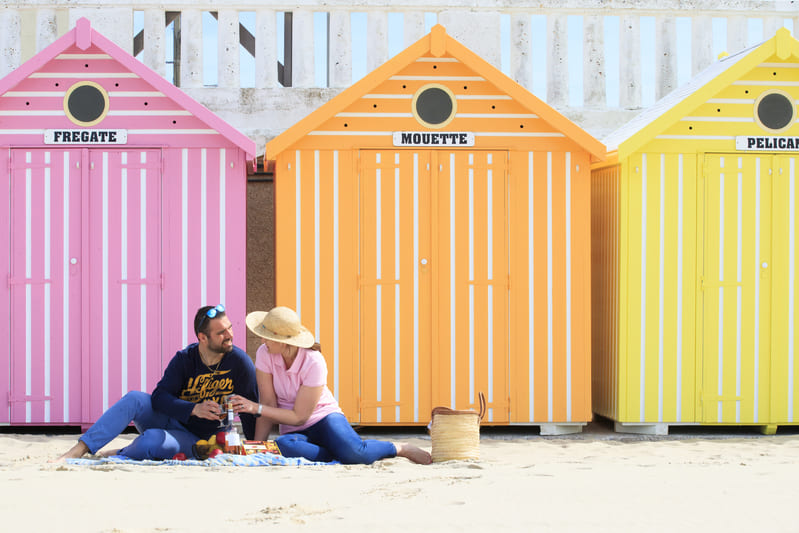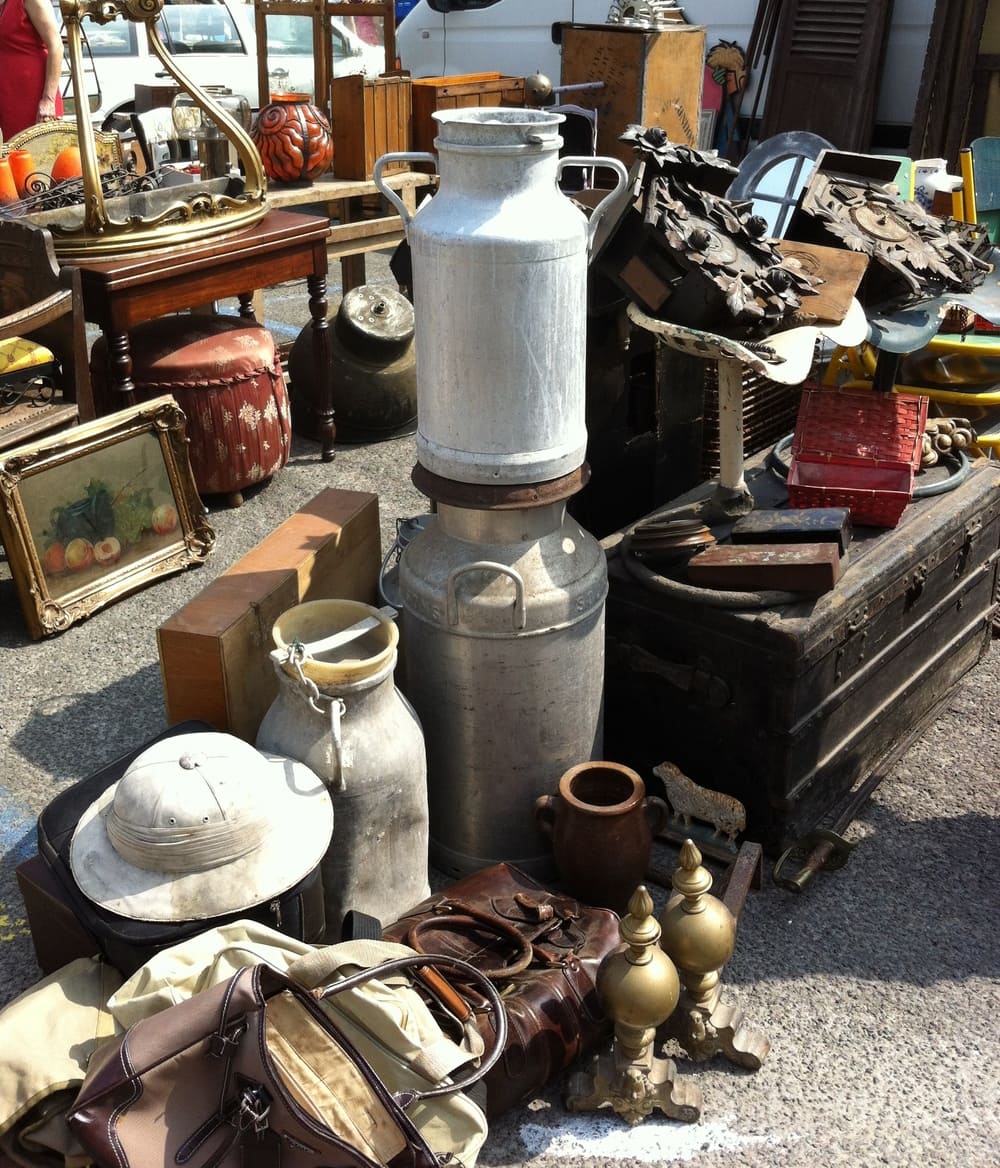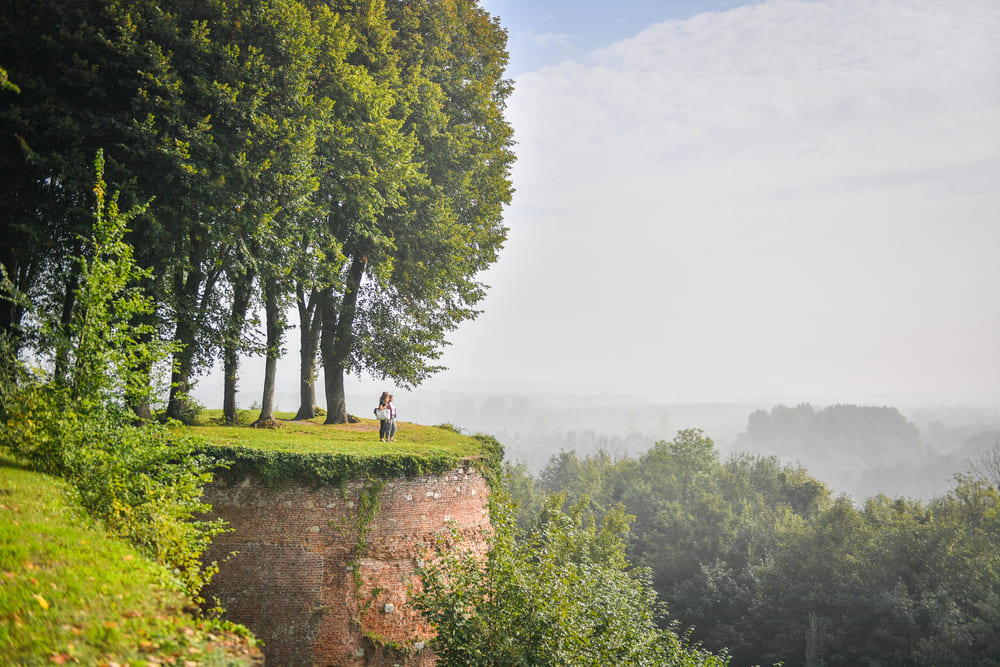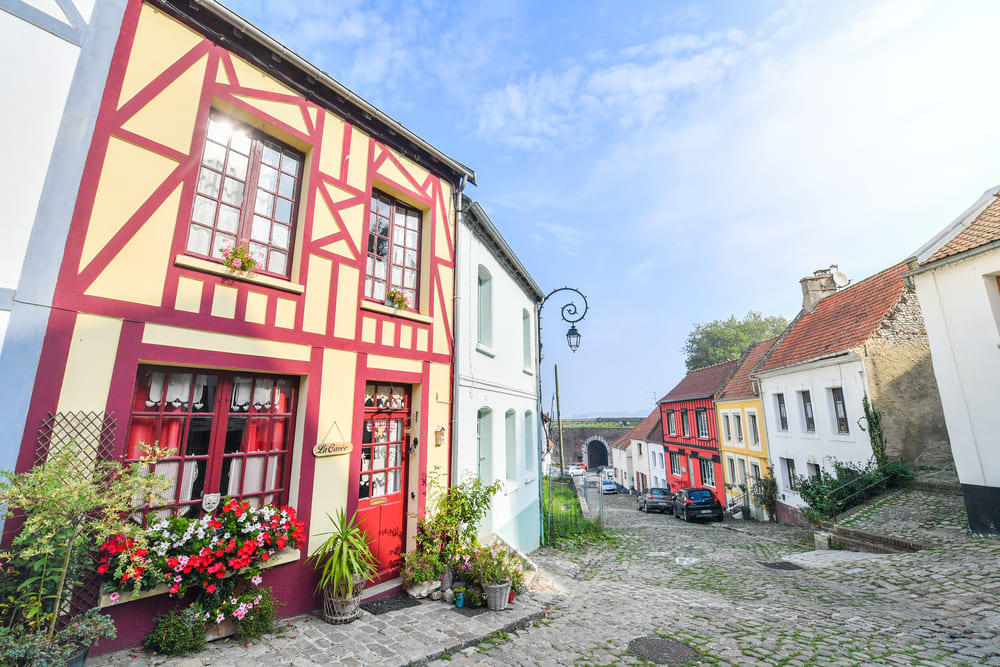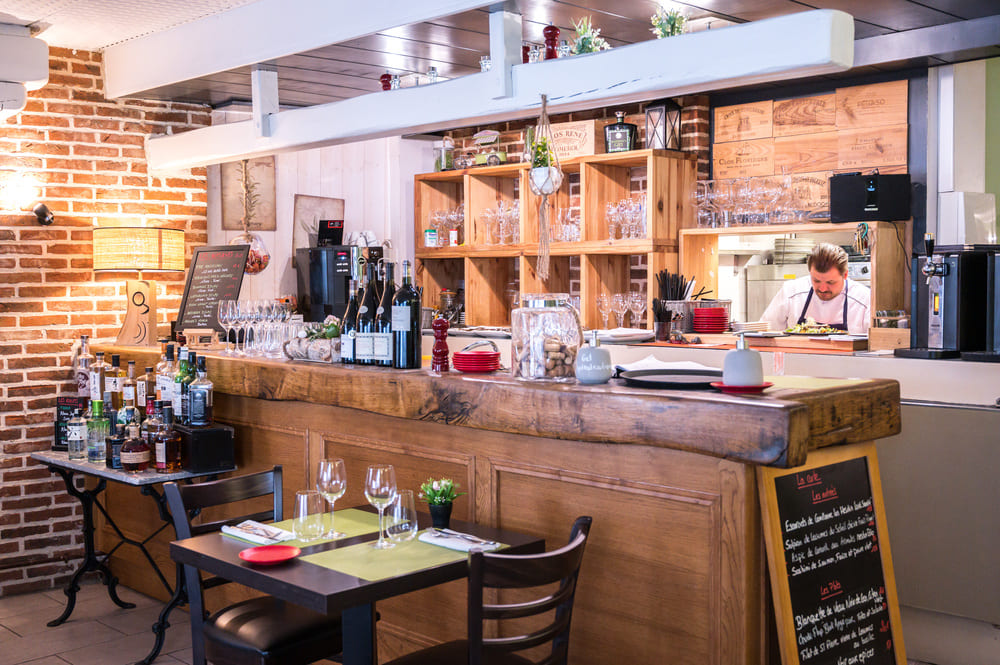Picture-postcard-pretty town to tempt food and history fans
Montreuil-sur-Mer sits atop a hill, encircled by ancient ramparts, gateway to the verdant 7 Valleys. Picture-postcard-pretty cobble stoned streets are lined with ancient houses, boutiques and buzzing-with-life bars. Historic churches, a colourful weekly market and castle ruins are just a few of its many charms. With Ville Fleurie 4-Star status, the town is a riot of colour as lamp posts, troughs, window boxes are planted up with bright flowers. Brimming with fabulous restaurants from cosy café style to Michelin-starred, the town, labelled a “Destination Gastronomique”, is as delicious as it’s enchanting.
A dog-friendly town
Montreuil-sur-Mer has the dog-friendly “Tourourisme’ certification, ensuring that the local tourism office will do their best to make dogs and dog owners feel welcome.
Montreuil – no Mer!
There’s one thing you won’t see, and that’s la mer – the sea. Despite the name, the sea is a few miles away. But several hundred years ago, the Canche river did lap the walls of what was in the 10th century, the first royal port of the Capets under Hugues, King of the Franks.
Iconic places
in Montreuil-sur-Mer
The citadel
Commissioned by Charles IX in 1567 on top of a 50-metre-high hill, the Citadel is nicknamed “the Carcassonne of the north”. There are significant remains from a 13th century castle on the same site and you’ll spot alterations by Vauban, Louis XIV’s military engineer.
Inside the porch entrance, the Coats of Arms of local knights who left from the citadel to fight against Henry V and his army at nearby Agincourt in 1415, make for a formidable list.
Napoleon Bonaparte established a camp here with the aim of conquering the English. He tinkered with the idea of deploying immense hot air balloons with flatbed platforms capable of carrying troops, horses and artillery, before reverting to traditional boats and then giving up altogether.
The citadel now houses the Musée Roger Rodiére – a collection of religious artworks and paintings depicting the history of Montreuil.
Statue of Haig
Montreuil-sur-Mer acted as headquarters for General Douglas Haig, British Commander-in-Chief during World War I. He was based at the Chateau de Beaurepaire on the outskirts, while 5,000 troops were based in the town. A bronze statue of him astride his horse, made by Paul Landowski, whose best-known work is Christ the Redeemer in Rio de Janeiro, sits before the pretty early 19th century theatre.
Marechal Haig – Montreuil-sur-Mer © Rémi Vimont
14th of July annual flea market – Montreuil-sur-Mer © J Kamps
Famed antiques market tempts Europe’s antique lovers
Every Saturday for as long as anyone can remember, and much further back than that, there has been a market in the main square of Montreuil-sur-Mer. People come from villages far and wide to do their shopping at a great range of stalls selling everything from lingerie to chickens.
The annual 14th July Antiques market takes place here with hundreds of sellers, tempting buyers from around Europe.
Churches of Montreuil-sur-Mer
Montreuil’s name derives from the Latin ‘monasteriolum’ (small monastery) and it was once an important religious centre with eight churches in the Middle Ages. The 12th century Abbey Saint-Saulve was once an immense building and though much of it has been destroyed over the years, what remains is very impressive with a magnificent Flamboyant nave. Close by is the 12th century Chapelle Saint-Nicolas de l’hôtel-Dieu, rebuilt in the 19th century by Clovis Normand (born in nearby Hesdin), a pupil of Viollet le Duc.
Chartreuse Notre-Dame des Prés-Neuville-sous-Montreuil © La Chartreuse de Neuville
Highlights
Ramparts – Montreuil-sur-Mer © Yannick Cadart-CD62
Roam the ramparts
Take a circuit of Montreuil via its ramparts lined with grassy knolls which are perfect for picnics. It will take you from 30 minutes to an hour, depending on how many times and for how long you stop to admire the views over the roof tops of the town and the Canche Valley.
La Chartreuse
At the bottom of Montreuil and easy to spot from its ramparts is the incredible La Chartreuse de Neuville. Founded in the 14th century by the Count of Boulogne, this monumental Charterhouse was also rebuilt by Clovis Normand. A guided tour takes you into rooms inhabited by the 24 “Fathers” who lived in their isolated apartments in silence, praying for mankind, supported by 24 monks. Wander the atmospheric cloisters and learn about life in the Charterhouse, its days as a centre of printing, a refuge for 5,000 Belgians displaced during World War I, and many other guises. Beautiful gardens overlook the Canche valley. Events are held year-round including exhibitions, concerts and a renowned summer blues festival.
The town inspired Victor Hugo’s Les Miserables
When Victor Hugo visited Montreuil-sur-Mer in 1837, he was peeved not to find the sea as he’d expected. He was however, smitten enough to immortalise the town and his memories of his visit in one of his most famous tales – Les Misérables.
The people Hugo met and the scenes he saw inspired him to create his epic tale of redemption making Jean Valjean, the central character, Mayor of Montreuil-sur-Mer. The great French writer is honoured with a bar named after him, as well as a chocolate shop. But it’s the annual night-time summer shows of Les Mis on the ramparts where he is best remembered. With a cast of some 500 singing and dancing locals, accompanied by cannon and horses, it’s an absolutely brilliant event, professional but heartfelt.
Montreuil-sur-Mer © Yannick Cadart-CD62
Shopping
Le Bistronome – Montreuil-sur-Mer © Les globe blogueurs
Montreuil-sur-Mer: The gourmet destination
While you’re here – eat. Seriously. Montreuil-sur-Mer, “Destination Gastronomique”, really is that good. There are regular food and wine festivals and lots of really excellent restaurants. The large central square, named after General de Gaulle, and many of the streets around, are chock-full of bars, restaurants and shops. At bakery Au Pétrin Grémont, a contender in the best baker in France competition you can buy delectable cakes and bread cut from a loaf named “Valjean”. Just across the road is Fromagerie Caseus, a shop which attracts cheese lovers from far and wide for its absolutely superb selection from France-wide to local specialities like stinky but sublime Maroilles. And at La Cave de Montreuil you’ll find an inspirational range of wines and liqueurs and a great tasting bar.
Whether it’s Michelin-starred dishes (La Grenouillère), a bistronomic treat, a snack from Le Pot du Clape soup bar on the pretty little rue du Clape-en-Bas or just to sit at a terraced café with a glass of whatever you fancy watching the world go by – this town has it all and then some.
What else
Opal Coast
If you’re craving the sea, it’s not far away! The golden sandy beaches of the Opal Coast can be easily reached. The seaside towns of Merlimont-Plage, Berck-sur-Mer, Stella Plage and Le Touquet-Paris-Plage are all less than 30 minutes by car.
More rural towns to visit
Hesdin
Saint-Omer
Top ten countryside attractions
See, do, eat and more
